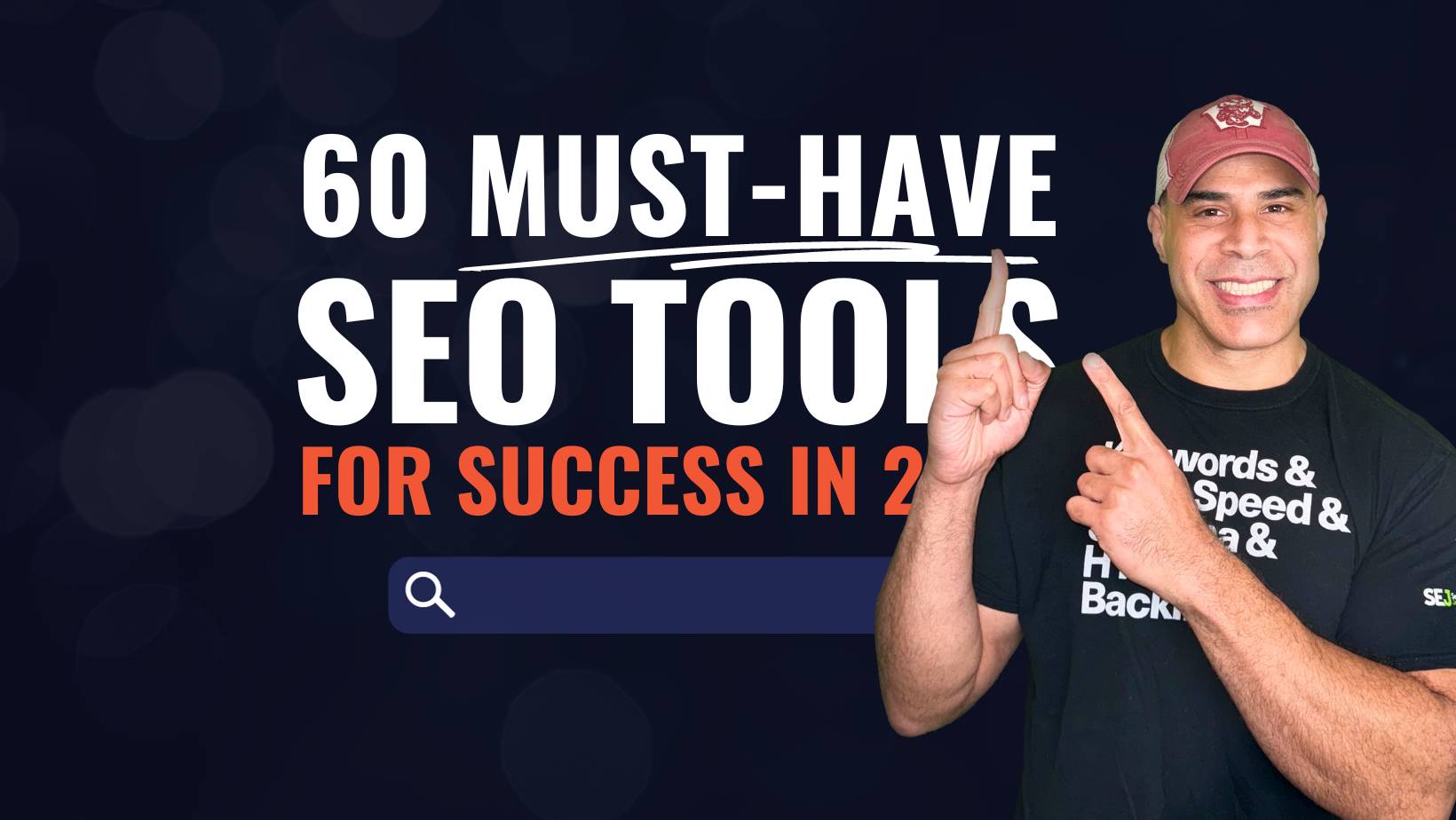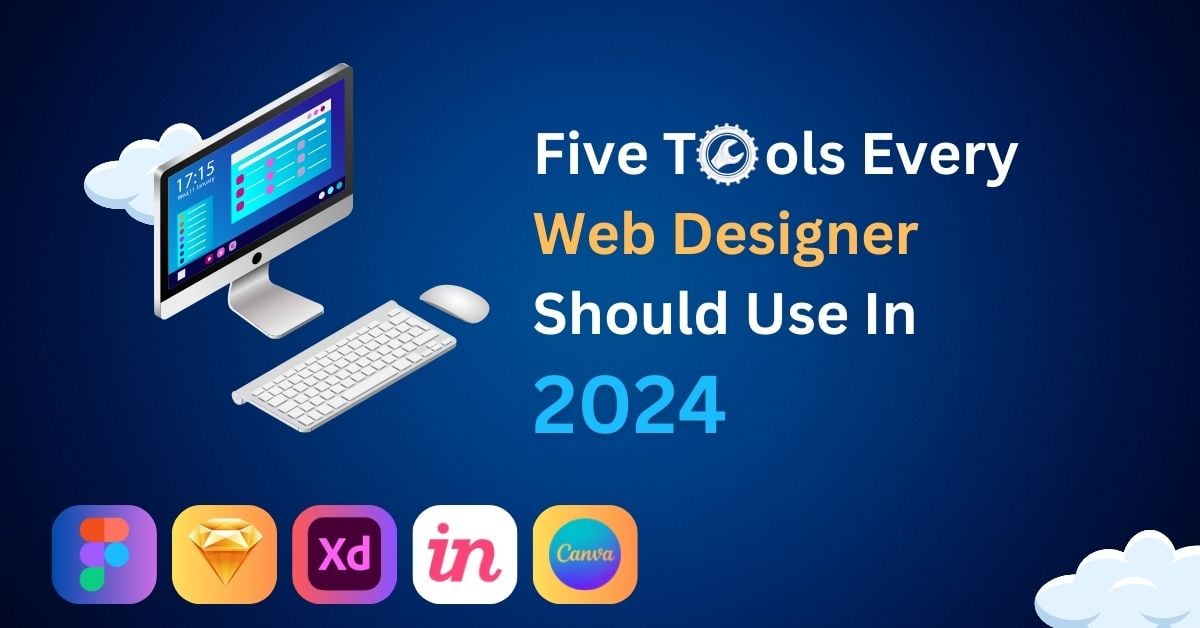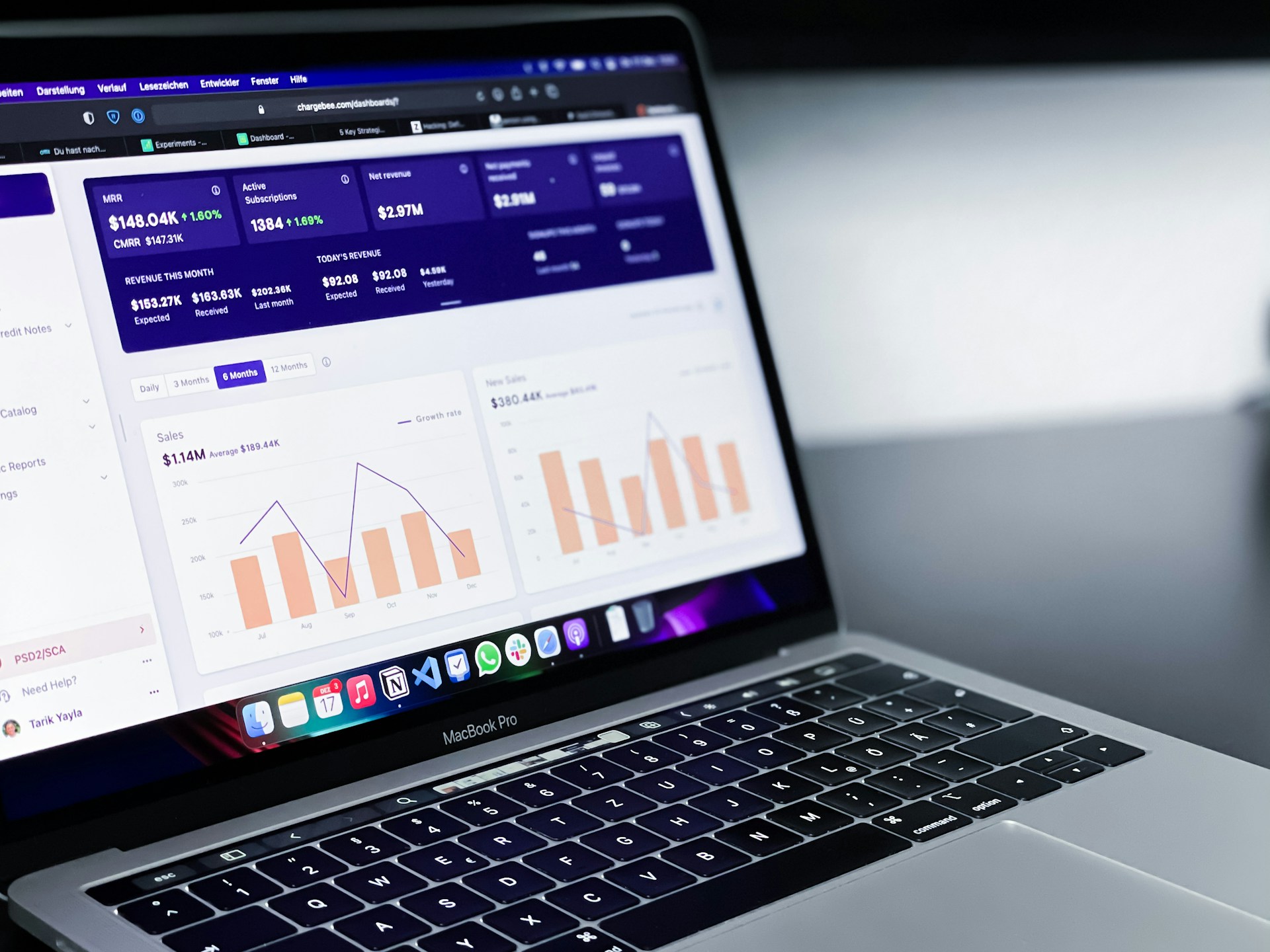Web Tools for 2024

When it comes to optimizing your website for peak performance, there are a plethora of tools available to help you achieve your goals. These tools are designed to enhance various aspects of your website, from its speed and loading time to its overall user experience. As a website owner myself, I have found these tools to be invaluable in ensuring that my site is running at its best. Web Tools for 2024.
One of the most popular website optimization tools is GTmetrix. This tool provides detailed insights into your website’s performance, including its loading time, page size, and number of requests. By identifying areas of improvement, GTmetrix allows you to make targeted changes to enhance your site’s speed.
Another fantastic tool is Google PageSpeed Insights. This tool not only provides an analysis of your website’s performance but also offers specific suggestions for improvement. By implementing the recommendations provided by Google PageSpeed Insights, you can ensure that your website is optimized to its full potential.
Web Tools for 2024 such as Pingdom and YSlow provide further insights into your website’s performance, including recommendations for optimizing images, compressing files, and minifying JavaScript and CSS. These tools help streamline your site’s resources, resulting in faster loading times and improved user experience.
Overall, investing in website optimization tools is crucial for ensuring that your site is running smoothly and efficiently. By utilizing these tools, you can identify areas for improvement, enhance your site’s performance, and ultimately provide your visitors with an exceptional user experience.
Tools for improving website performance

When it comes to optimizing your website for peak performance, several tools can help you achieve your goals. These tools focus on improving different aspects of your website’s performance, such as speed, loading time, and overall user experience. As a website owner myself, I have found these tools to be incredibly useful in ensuring that my site is running at its best. Web Tools for 2024.
One of the most popular tools for improving website performance is GTmetrix. This tool provides detailed insights into your website’s performance, including its loading time, page size, and number of requests. By identifying areas for improvement, GTmetrix allows you to make targeted changes to enhance your site’s speed.
Another fantastic tool is Google PageSpeed Insights. Not only does it provide an analysis of your website’s performance, but it also offers specific suggestions for improvement. By implementing the recommendations provided by Google PageSpeed Insights, you can optimize your website to its full potential.
Tools like Pingdom and YSlow provide further insights into your website’s performance. They offer recommendations for optimizing images, compressing files, and minifying JavaScript and CSS. These tools help streamline your site’s resources, resulting in faster loading times and an improved user experience.
Investing in website optimization tools is crucial for ensuring that your site runs smoothly and efficiently. By utilizing these tools, you can identify areas for improvement, enhance your website’s performance, and ultimately provide your visitors with an exceptional user experience.
Tools for enhancing user experience

When it comes to enhancing the user experience on your website, there are a variety of tools that can help you create a seamless and enjoyable browsing experience. One such tool is Hotjar, which provides heatmaps, recordings, and surveys to help you understand how users interact with your site. By gaining insights into user behavior, you can identify pain points and make necessary improvements.
Another Web Tools for 2024 that can greatly enhance user experience is Optimizely. This tool allows you to run A/B tests to determine which variations of your website perform best. By testing different layouts, content, and calls to action, you can optimize your site for maximum user engagement and conversions.
Furthermore, UserTesting is a tool that allows you to get real-time feedback from actual users. This invaluable resource allows you to see firsthand how users navigate and interact with your website. By incorporating user feedback into your design and functionality choices, you can create a user experience that truly resonates with your target audience.
In conclusion, Web Tools for 2024 using like Hotjar, Optimizely, and UserTesting can help you significantly enhance the user experience on your website. By understanding user behavior, testing variations, and gathering feedback, you can create a website that is intuitive, seamless, and engaging for your visitors. So why not give these tools a try and take your user experience to the next level?
SEO Tools

When optimizing your website for search engines, having the right tools at your disposal is essential. Here are a few SEO tools that I highly recommend for keyword research, monitoring SEO performance, and staying ahead of the competition: Web Tools for 2024.
- Keyword research and analysis tools:
- Google Keyword Planner: This tool provides valuable insights into keyword search volume, competition, and trends.
- SEMrush: With its comprehensive keyword database, SEMrush helps you identify the most relevant and competitive keywords for your website.
- Ahrefs: A powerful tool that not only helps you find keywords but also provides valuable backlink data for competitive analysis.
- SEO performance monitoring tools:
- Google Analytics: A must-have tool for tracking website traffic, identifying top-performing keywords, and monitoring user behavior.
- Moz Pro: This all-in-one SEO suite offers keyword tracking, site audits, and backlink monitoring to help you improve your website’s performance.
- Screaming Frog: A crawler tool that analyzes your website’s SEO elements and identifies issues that may affect your search rankings.
By using these SEO tools, you can optimize your website for search engines, improve your rankings, and attract more organic traffic to your site. Don’t forget to regularly analyze your website’s performance to identify areas for improvement and stay on top of the ever-changing SEO landscape. Web Tools for 2024.
Tools for keyword research and analysis

Web Tools for 2024. When it comes to keyword research and analysis, there are a few tools that I highly recommend. These tools can help you identify the most relevant and competitive keywords for your website, giving you a better chance of ranking higher in search engine results.
One of my top picks is Google Keyword Planner. This tool provides valuable insights into keyword search volume, competition, and trends. It allows you to discover new keywords and gather data on their performance, making it easier to select the best keywords for your website.
Another great tool is SEMrush. With its comprehensive keyword database, SEMrush gives you access to a wide range of keyword options. It not only helps you find keywords but also provides data on their search volume, competition level, and trends. This information can be invaluable in choosing the right keywords for your SEO strategy.
Ahrefs is another powerful tool that I highly recommend. Along with finding keywords, it also provides backlink data for competitive analysis. This helps you understand not only what keywords your competitors are targeting but also the quality and quantity of the backlinks they have. Armed with this data, you can develop a more effective keyword strategy and outperform your competition in search engine rankings.
Tools for monitoring SEO performance

When it comes to monitoring the performance of your SEO strategy, there are a few tools that I highly recommend. These tools provide you with valuable insights into your website’s visibility, search rankings, and overall SEO health. Web Tools for 2024.
Google Search Console is a must-have tool for monitoring your SEO performance. It allows you to track the number of impressions and clicks your website receives in search results, as well as the average position of your website for specific keywords. You can also identify any technical issues that may be affecting your SEO performance, such as crawl errors or mobile usability problems.
Another great tool is Moz Pro. It provides in-depth SEO analytics and allows you to track your website’s visibility and rankings over time. Moz Pro also offers features like keyword research, link analysis, and competitor analysis, giving you a comprehensive view of your SEO performance.
SEMrush is another powerful tool for monitoring SEO performance. It provides detailed reports on your website’s organic visibility, keyword rankings, and backlink profile. SEMrush also offers competitive analysis features, allowing you to compare your SEO performance to your competitors and identify areas for improvement.
By using these tools to monitor your SEO performance, you can gain valuable insights into how your website is performing in search engines and make data-driven decisions to optimize your SEO strategy.
Web Design Tools

When it comes to designing a website, several tools can make the process much easier and more efficient. With the advancements in technology, web design tools have become more sophisticated and user-friendly. Here are some of the top web design tools that I recommend for creating stunning and responsive websites.
For creating responsive designs, one of the best tools is Adobe XD. With its intuitive interface and powerful features, you can easily design and prototype websites that look great on any device. It allows you to create interactive designs and preview them in real time, making it easier to visualize your final product.
Another great tool for web design is Canva. This graphic design platform offers a wide range of templates and design elements that can be customized to fit your brand. With its drag-and-drop functionality, you can easily create stunning visuals and multimedia elements for your website. Web Tools for 2024.
When it comes to multimedia integration, Adobe Creative Cloud is a must-have. It includes tools like Photoshop and Illustrator, which are essential for creating and editing images and graphics. You can also use tools like Premiere Pro for editing videos and Audition for audio editing.
By utilizing these web design tools, you can create visually appealing and user-friendly websites that leave a lasting impression on your visitors. So why wait? Start exploring these tools and let your creativity soar!
Tools for creating responsive designs

When it comes to creating responsive designs, several tools can make the process much easier and more efficient. One of my favorite tools for this purpose is Adobe XD. With its intuitive interface and powerful features, I can easily design and prototype websites that look great on any device. I love the real-time preview option, which allows me to see how my designs will appear on different screen sizes.
Another Web Tools for 2024 that I highly recommend is Figma. It offers a wide range of design and collaboration features that make it easy to create responsive designs. With its drag-and-drop functionality and the ability to set constraints, I can ensure that my designs adapt seamlessly to different screen sizes.
For those who prefer a more code-based approach, Bootstrap is an excellent choice. It is a popular front-end framework that provides a responsive grid system and a library of CSS components. By using Bootstrap, I can quickly build responsive websites without having to write complex CSS code.
In conclusion, these tools for creating responsive designs are essential for modern web design. They allow me to create visually appealing and user-friendly websites that provide a seamless experience across different devices. So why not give them a try and enhance your web design skills?
Tools for graphic design and multimedia integration

When it comes to graphic design and multimedia integration, there are a variety of tools that can help bring your website to life. One tool that I highly recommend is Adobe Photoshop. This powerful software allows you to create stunning visuals, edit images, and optimize graphics for the web. With its extensive range of features, including layers, filters, and blending modes, Photoshop gives you complete control over the design process.
Another useful tool for graphic design is Canva. It is a user-friendly online design platform that offers a wide array of templates, stock photos, and graphics. Canva is perfect for creating eye-catching social media posts, blog graphics, and even logos. Its drag-and-drop interface makes it easy to customize designs to fit your brand.
Regarding multimedia integration, Adobe Premiere Pro is an excellent choice. This video editing software provides professional-level tools for editing and enhancing videos. With its intuitive interface and powerful features, you can easily trim clips, add transitions and effects, and export videos in various formats.
For audio integration, Audacity is a popular choice. It is a free and open-source audio editing software that allows you to record, edit, and mix audio tracks. Whether you need to create voiceovers, background music, or podcasts, Audacity has all the essential tools to deliver high-quality audio.
In conclusion, these graphic design and multimedia integration tools are essential for creating visually appealing and engaging websites. They provide the necessary features and functionalities to enhance your website’s aesthetics and overall user experience. So why not give them a try and take your web design to the next level?
Content Creation Tools

When it comes to content creation, there is a wide range of tools available to help enhance your writing and create visually appealing multimedia elements. One tool that I find particularly useful is Grammarly. It is an online writing assistant that helps me improve my grammar, spelling, and overall writing style. With its suggestions and corrections, I can ensure that my content is clear, concise, and error-free.
In addition to Grammarly, another tool that I rely on is Canva. It is a versatile design platform that offers a variety of templates and graphics to enhance my visuals. Whether I need to create engaging social media posts, infographics, or blog graphics, Canva provides me with easy-to-use tools to make my content visually appealing.
Web Tools for 2024 When it comes to multimedia elements, Pixlr is a great tool for editing and enhancing images. With its wide array of filters, effects, and editing tools, I can make my visuals stand out and grab the attention of my audience.
Lastly, for creating videos and animations, Powtoon is an excellent tool. It allows me to create professional-looking videos and presentations with its user-friendly interface and pre-designed templates.
In conclusion, these content creation tools are essential for producing high-quality content that engages and captivates your audience. By utilizing these tools, you can enhance your writing, create visually appealing visuals, and make your content more engaging and memorable. So why not give them a try and take your content creation to the next level?
Keywords: content creation, writing assistant, Grammarly, Canva, visuals, images, Pixlr, videos, animations, Powtoon, high-quality content Web Tools for 2024.
Tools for writing and editing content

When it comes to creating impactful content, having the right tools for writing and editing is crucial. These tools can help enhance your writing style, improve grammar and spelling, and ensure that your content is error-free and engaging. As a content creator, I rely on several tools to help me polish my work and make it stand out.
One tool that I find indispensable is Grammarly. It is an online writing assistant that provides real-time grammar and spell-checking suggestions. With Grammarly, I can easily identify and correct any errors in my writing, ensuring that my content is clear and professional. Web Tools for 2024.
Another tool that I use is Hemingway Editor. It helps me simplify my writing, making it more concise and readable. Hemingway Editor highlights long or complex sentences, excessive use of adverbs, and other common writing pitfalls. By using this tool, I can ensure that my content is easy to understand and digest.
I also rely on Google Docs for collaborative writing and editing. It allows multiple team members to work on a document simultaneously, making it easy to gather feedback and make changes in real time.
Lastly, for content formatting and organizing, I utilize tools like Microsoft Word or Google Docs. These tools offer a wide range of formatting options such as headings, bullet points, and tables, helping me structure my content in a visually appealing way.
Overall, these tools for writing and editing content have greatly enhanced my content creation process. With their assistance, I can produce high-quality and error-free content that resonates with my audience.
Tools for enhancing visuals and multimedia elements

When it comes to creating visually stunning and engaging content, there are several tools that I rely on to enhance visuals and multimedia elements. One of my go-to tools is Canva. It offers a wide range of templates and designs that can be customized for various purposes, such as social media graphics, presentations, and infographics. With Canva, I can easily create eye-catching visuals even without prior design experience.
Another tool that I find useful is Adobe Photoshop. It is a powerful image editing software that allows me to retouch and enhance images, adjust colors, add filters, and create visually appealing graphics. Adobe Photoshop gives me the flexibility and precision to bring my ideas to life. Web Tools for 2024.
For multimedia integration, I often use Adobe Premiere Pro. This video editing software enables me to edit and combine video clips, add transitions and effects, and create professional-quality videos. With its intuitive interface and powerful editing features, Adobe Premiere Pro helps me create engaging multimedia content.
Lastly, for adding interactive elements to my content, I use tools like ThingLink and H5P. These tools allow me to create interactive images, videos, and quizzes, enhancing user engagement and interactivity.
In conclusion, these tools for enhancing visuals and multimedia elements have greatly enriched my content creation process. They have helped me produce visually appealing and interactive content that captivates my audience.
Analytics Tools

When it comes to understanding and analyzing website performance, analytics tools play a crucial role. These tools provide valuable insights into website traffic, user behavior, and overall performance. One of the top analytics tools I rely on is Google Analytics. It allows me to track various metrics, including the number of visitors, page views, bounce rate, and conversion rate. The user-friendly interface and customizable dashboards of Google Analytics make it easy for me to monitor my website’s performance. Web Tools for 2024.
In addition to Google Analytics, I also use tools like Hotjar. Hotjar provides heatmaps, visitor recordings, and conversion funnels, giving me a deeper understanding of how users interact with my website. This helps me identify areas for improvement and optimize the user experience.
Another tool that I find beneficial is SEMrush. It not only provides SEO insights but also offers detailed analytics on organic and paid search traffic. With SEMrush, I can monitor my website’s ranking on search engine result pages, analyze competitors’ strategies, and track keyword performance.
These analytics tools assist me in making data-driven decisions, improving website performance, and optimizing user experience. By analyzing the factual data provided by these tools, I can identify trends, spot areas of improvement, and drive my website toward success.
Tools for tracking website traffic and user behavior

When it comes to tracking website traffic and understanding user behavior, there are several tools that I rely on. These tools provide valuable insights into how visitors interact with my website, allowing me to make data-driven decisions and optimize the user experience.
Web Tools for 2024 One of the top tools in this category is Google Analytics. It offers a comprehensive set of features, including audience reports, behavior flow analysis, and conversion tracking. With Google Analytics, I can track various metrics such as the number of visitors, page views, bounce rate, and conversion rate. The user-friendly interface and customizable dashboards make it easy for me to monitor my website’s performance.
Another tool that I find useful is Hotjar. It provides heatmaps, visitor recordings, and conversion funnels, allowing me to visualize how users navigate through my website. This helps me identify any usability issues or areas where visitors may be dropping off.
Additionally, tools like Crazy Egg and Mouseflow provide heatmaps and session replays, enabling me to gain a deeper understanding of user behavior. These tools show where visitors are clicking, how far they scroll, and where they get stuck, allowing me to improve website design and layout.
By using these tracking tools, I can gather factual data about my website’s performance and user behavior. This information helps me make informed decisions to maximize engagement, improve user experience, and ultimately drive success for my website.
Tools for generating performance reports

When it comes to analyzing website performance, having the right tools to generate detailed reports is crucial. These reports provide valuable insights into key metrics, allowing you to measure the effectiveness of your strategies and make data-driven decisions for your website.
One of the top tools for generating performance reports is Google Data Studio. It allows you to create customizable dashboards and visualizations that pull data from various sources, including Google Analytics and Google Ads. With Google Data Studio, you can track KPIs, compare metrics, and present your findings in an easy-to-understand format.
Another useful tool for generating performance reports is SEMrush. It provides comprehensive SEO and marketing analytics, allowing you to monitor your website’s visibility, keyword rankings, backlinks, and more. With SEMrush, you can generate reports that provide insights into your website’s overall performance and identify areas for improvement.
Additionally, tools like Moz and Ahrefs offer robust reporting features that help you analyze your website’s SEO performance. These tools provide detailed data on keyword rankings, backlinks, technical SEO issues, and more, enabling you to track your progress and identify opportunities for optimization. Web Tools for 2024.
By utilizing these performance reporting tools, you can gather factual data about your website’s performance and use it to make informed decisions. Whether it’s tracking SEO metrics, analyzing user behavior, or evaluating conversion rates, these tools provide the insights you need to continually improve and optimize your website.
Conclusion

In conclusion, the web tools reviewed for 2024 offer a wide range of features and capabilities to enhance website optimization, SEO, web design, content creation, and analytics. These tools provide valuable insights and data that can help businesses make informed decisions and drive success in the online space.
From website optimization tools such as Google PageSpeed Insights and GTmetrix to improve website performance, to user experience tools like Hotjar and Optimizely, there are tools available to address every aspect of your website.
For SEO, tools like SEMrush, Moz, and Ahrefs offer comprehensive keyword research, monitoring, and reporting capabilities to help improve visibility and rankings in search results.
When it comes to web design, tools such as Adobe XD and Figma allow for the creation of responsive and visually appealing designs, while graphic design tools like Canva and Adobe Creative Cloud help enhance visuals and multimedia integration.
Content creation tools like Grammarly and Hemingway Editor assist in writing and editing content, while analytics tools like Google Analytics and Google Data Studio provide valuable insights into website traffic and user behavior.
Overall, the reviewed web tools for 2024 provide the necessary features and functionality to optimize and enhance your website’s performance, create engaging content, and drive success in the online world. By incorporating these tools into your website strategy, you can stay ahead of the competition and continue to grow your online presence. Web Tools for 2024.
Summary of the best web tools reviewed for 2024

Throughout my review of cutting-edge Web Tools for 2024, I have come across several standout tools that are worth mentioning. These tools offer a range of features and functionalities to optimize websites, improve SEO performance, enhance web design, create engaging content, and track website analytics. Here is a summary of the best web tools I have reviewed:
- Google PageSpeed Insights and GTmetrix: These tools are incredibly useful for improving website performance by analyzing page loading speed and suggesting optimizations.
- Hotjar and Optimizely: These tools provide valuable insights into user behavior and allow for the optimization of the user experience on websites.
- SEMrush, Moz, and Ahrefs: These SEO tools offer comprehensive keyword research, monitoring, and reporting capabilities to improve website visibility and rankings in search results.
- Adobe XD and Figma: These web design tools enable the creation of responsive and visually appealing designs.
- Canva and Adobe Creative Cloud: These graphic design tools enhance visuals and facilitate multimedia integration.
- Grammarly and Hemingway Editor: These content creation tools assist in writing and editing content, ensuring high-quality and error-free writing.
- Google Analytics and Google Data Studio: These analytics tools track website traffic and user behavior, and generate performance reports for informed decision-making.
By incorporating these web tools into your website strategy, you can optimize your website’s performance, create engaging content, and drive success in the online world.
Future trends in web tool development

As I reviewed the cutting-edge Web Tools for 2024, I couldn’t help but ponder what the future holds for web tool development. Based on current trends and advancements in technology, here are some predictions for the future of web tools:
- Artificial Intelligence (AI) Integration: AI-powered web tools will become more prevalent, helping automate tasks like content generation, data analysis, and user personalization.
- Voice-Activated Tools: With the rise of voice assistants like Siri and Alexa, web tools will adapt to voice commands, allowing users to perform tasks and access information hands-free.
- Augmented Reality (AR) and Virtual Reality (VR) Tools: AR and VR technologies will revolutionize web design and user experience, enabling virtual product try-ons, immersive browsing experiences, and interactive visualizations.
- Enhanced Cybersecurity Tools: As cyber threats continue to evolve, web tools will prioritize security measures to protect user data and prevent security breaches. Web Tools for 2024
- Low-Code/No-Code Tools: Non-technical users will have access to intuitive, drag-and-drop web tools that require minimal coding knowledge, making website development more accessible to a wider audience.
As technology continues to advance, web tool development will undoubtedly embrace these trends to provide users with even more powerful, user-friendly, and innovative solutions for their website needs. Stay tuned for these exciting developments in the coming years!

